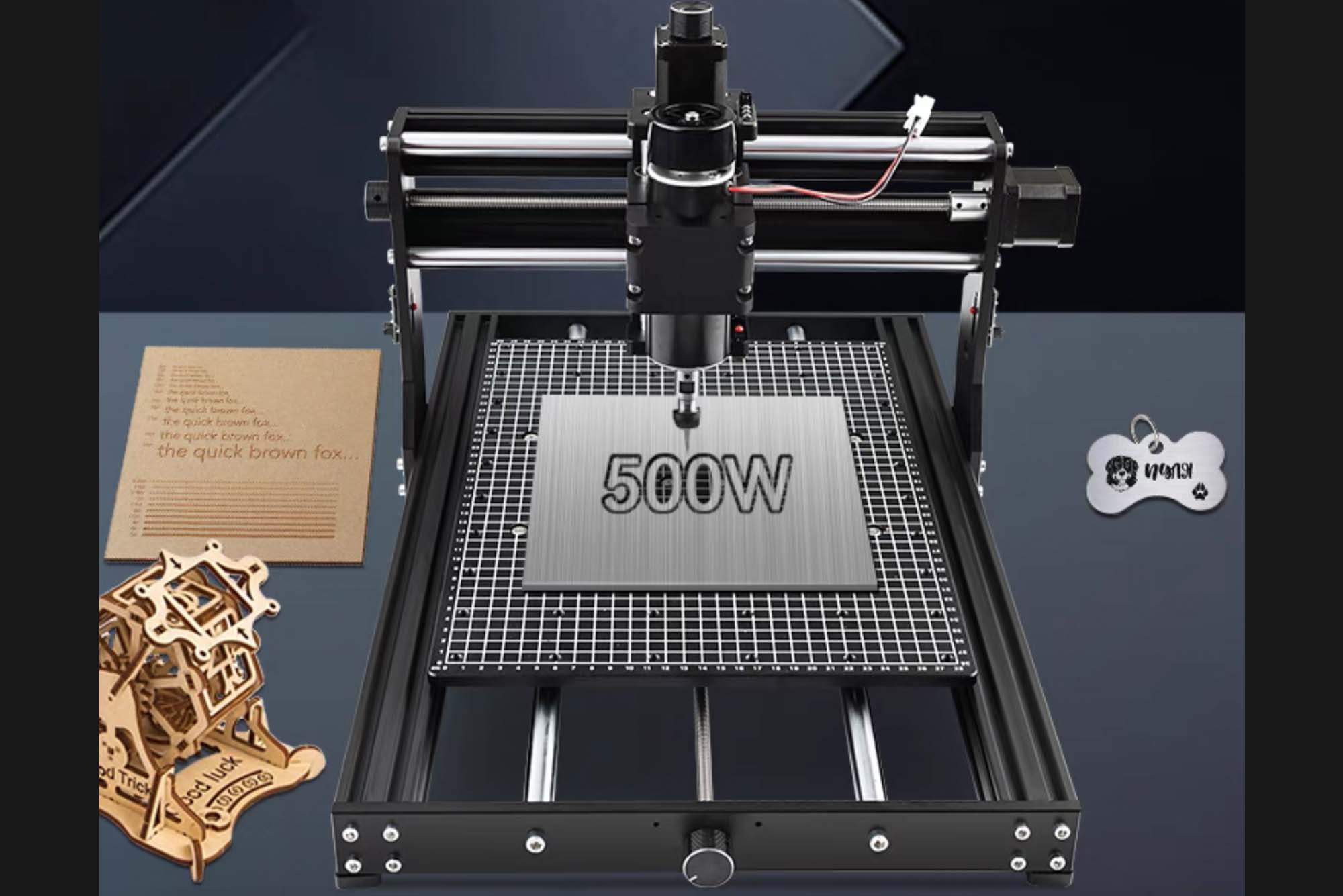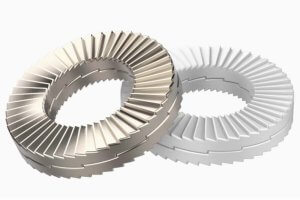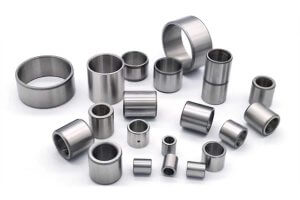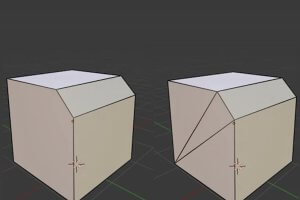Introduction: The Art and Science of Metal Engraving with CNC
Metal engraving has always been a craft that combines precision, artistry, and functionality. Historically, it was the realm of skilled artisans who spent hours, even days, etching intricate patterns or creating identifiable markings. Today, technological advancements such as CNC (Computer Numerical Control) and laser engraving have transformed this craft into a high-speed, highly precise process that serves both industrial and artistic needs.
Whether you’re creating a custom gift, marking industrial tools, or branding components for aerospace applications, engraving has become an essential part of production and personalization. The seamless integration of CNC and laser technologies allows for unmatched accuracy, repeatability, and scalability—paving the way for modern metal engraving to meet the highest standards of functionality and aesthetics.
In this guide, we’ll explore the evolution of metal engraving techniques, from traditional methods to cutting-edge CNC and laser applications. Whether you’re a designer, manufacturer, or hobbyist, this comprehensive resource will equip you with the knowledge to harness the full potential of modern engraving.
Understanding Metal Engraving: Methods and Applications
Metal engraving is the process of removing material from a metal surface to create designs, patterns, or functional markings. The method and tools used for engraving depend on the desired outcome, material properties, and project requirements. Here, we’ll compare traditional and modern techniques while examining the key applications of metal engraving.
1. Traditional Methods
Traditional engraving methods require manual skill and time but remain valuable for specific applications where artistry and heritage are key factors.
- Hand Engraving: This involves using manual tools like burins or chisels to carve into the metal. Each stroke is guided by the artisan’s hand, offering a personal touch and unparalleled uniqueness. However, it’s labor-intensive and requires years of practice to perfect.
- Applications: Custom jewelry, heirlooms, and fine art restoration.
- Example: Hand-engraved wedding rings or antique silverware.
- Chemical Etching: Uses acids or other chemical agents to etch designs into metal. A protective stencil is applied to shield certain areas, leaving exposed regions to react with the chemicals and create the design. This method is suitable for fine, intricate patterns.
- Applications: Decorative plaques, circuit boards, and detailed nameplates.
- Example: Chemical-etched patterns on decorative panels.
2. Modern Techniques
Modern technologies have revolutionized metal engraving by offering faster, more precise, and more scalable solutions.
- CNC Engraving: A computer-controlled tool removes material based on pre-programmed designs. CNC engraving achieves unparalleled accuracy and is ideal for batch production.
- Applications: Industrial components, personalized gifts, and signage.
- Example: Serial numbers engraved on aerospace parts.
- Laser Engraving: A focused laser beam vaporizes the metal surface to create highly detailed engravings. It’s contactless, reducing wear on tools and allowing for intricate designs.
- Applications: Electronics branding, medical instruments, and trophies.
- Example: QR codes laser-engraved onto surgical tools.
3. Applications Across Industries
Metal engraving’s versatility spans diverse industries:
| Industry | Application Examples |
|---|---|
| Industrial | Serial numbers, barcodes, machine labels |
| Jewelry | Custom designs, engraving names or dates on rings and pendants |
| Automotive | Engraving VINs (Vehicle Identification Numbers) and logos on components |
| Aerospace | Marking parts with identification codes for traceability |
| Art and Design | Creating unique sculptures, patterns on decorative items |
By understanding the wide array of techniques and applications, you can identify the most effective engraving method for your project.
How CNC Technology Transforms Metal Engraving
CNC engraving is a transformative technology that has elevated metal engraving to new levels of precision and efficiency. Here, we’ll break down the CNC engraving process, highlight its advantages, and provide examples of its real-world applications.
1. Workflow of CNC Engraving
The CNC engraving process is straightforward yet powerful:
- Design Creation: A CAD (Computer-Aided Design) program generates the engraving design. Examples include logos, text, or intricate patterns.
- Toolpath Programming: CAM (Computer-Aided Manufacturing) software converts the design into toolpaths, providing the CNC machine with precise instructions.
- Engraving Execution: The CNC machine, using tools like carbide bits, removes material according to the programmed paths.
This seamless integration of design and execution ensures both consistency and precision, regardless of the project’s complexity.
2. Advantages of CNC Engraving
CNC engraving offers numerous benefits that make it superior to traditional methods for many applications:
| Advantage | Details |
|---|---|
| High Precision | Achieves micrometer-level accuracy, essential for industrial and medical parts |
| Repeatability | Ensures identical results in large production runs |
| Versatility | Works on various metals, from soft aluminum to hard titanium |
| Efficiency | Reduces production time while maintaining consistent quality |
3. Examples of CNC Engraving in Action
- Industrial Nameplates: Produces clear and durable labels for machinery.
- Custom Gifts: Creates personalized items like engraved pens, plaques, and flasks.
- Aerospace Components: Marks critical parts with serial numbers and specifications.
CNC engraving’s ability to handle intricate designs with unmatched precision has made it a cornerstone of modern manufacturing.
Choosing the Right CNC Machine for Metal Engraving
Selecting the best CNC machine is essential for achieving high-quality results. The choice depends on factors like the project’s complexity, the materials involved, and your budget.
1. Types of CNC Machines for Engraving
| Type | Capabilities | Best For |
|---|---|---|
| 3-Axis Machines | Engraving on flat surfaces | Basic designs and small projects |
| 5-Axis Machines | Engraving on curved or irregular surfaces | Complex, multidimensional engravings |
| Desktop CNCs | Compact, cost-effective, suitable for beginners | Hobbyists or small-scale production |
2. Key Considerations When Choosing a CNC Machine
- Material Compatibility: Ensure the machine can engrave your desired metals, such as stainless steel or brass.
- Software Integration: Choose a machine compatible with user-friendly CAD/CAM software.
- Precision Requirements: Opt for machines offering high-resolution capabilities for detailed engravings.
3. Popular CNC Machines for Metal Engraving
| Model | Capabilities | Recommended For |
|---|---|---|
| Haas Mini Mill | High precision, compact | Industrial projects and nameplates |
| Tormach 1100MX | Versatile, mid-range size | Custom gifts, signage |
| Gravograph IS400 | Specialized for engraving | Decorative and artistic applications |
By matching your project needs with the right equipment, you’ll maximize efficiency and ensure optimal results.
Best Practices for CNC Metal Engraving
To achieve flawless results with CNC engraving, it’s important to optimize your setup and adhere to best practices.
1. Material Selection
Selecting the right material is crucial. Here are some common metals and their suitability for engraving:
- Aluminum: Lightweight and easy to engrave, ideal for custom gifts or signage.
- Stainless Steel: Durable but requires harder tools and slower engraving speeds.
- Brass: Offers excellent machinability, making it a favorite for decorative applications.
2. Tool Optimization
- Use carbide or diamond-coated bits for better durability and sharper results.
- Adjust spindle speed and feed rate according to material hardness. For instance, softer metals like aluminum require higher speeds, while hard metals like titanium need slower speeds.
3. Troubleshooting Common Issues
- Problem: Rough edges.
- Solution: Use sharper tools and reduce feed rates.
- Problem: Uneven depth.
- Solution: Ensure the workpiece is leveled and securely clamped.
By following these best practices, you can enhance the quality and consistency of your CNC engravings.
Case Studies: Metal Engraving Success Stories
1. Industrial Nameplate Customization
- Project: A manufacturing plant needed custom nameplates for their equipment, each featuring serial numbers, QR codes, and branding elements.
- Solution: Using a CNC machine, they streamlined the engraving process, cutting production time by 40% while ensuring accuracy and durability.
- Outcome: Enhanced traceability and branding for the company’s products.
2. Personalized Jewelry Engraving
- Project: A jewelry boutique aimed to offer customized engravings on rings and pendants as a premium service.
- Solution: By employing a high-precision laser engraving machine, the boutique created intricate and delicate patterns that were previously difficult to achieve manually. The machine’s ability to work on a variety of metals, including gold and silver, ensured versatility.
- Outcome: Customer satisfaction increased significantly as the boutique offered fast turnaround times and exquisite designs. This added personalization service resulted in a 30% boost in sales and stronger customer loyalty.
3. Aerospace Component Marking
- Project: An aerospace supplier required durable and precise markings on critical components to meet regulatory standards.
- Solution: Adopted a 5-axis CNC machine to engrave part numbers, manufacturing details, and QR codes onto titanium and other durable metals.
- Outcome: The company achieved compliance with strict aerospace traceability requirements while enhancing the quality and longevity of component markings.
4. Artistic Sculpture Detailing
- Project: A metal artist sought to create intricate designs on a large steel sculpture.
- Solution: Leveraged a combination of CNC engraving and hand-finishing to produce detailed patterns, ensuring scalability while retaining artistic authenticity.
- Outcome: The sculpture gained critical acclaim for its detailed craftsmanship and innovative use of technology.
Data Table: CNC Machines and Their Metal Engraving Capabilities
| Machine | Engraving Area | Precision | Best For |
|---|---|---|---|
| Haas Mini Mill | 200 x 150 mm | ±0.01 mm | Industrial components |
| Tormach 1100MX | 450 x 300 mm | ±0.05 mm | Custom gifts and mid-size projects |
| Gravograph IS400 | 500 x 400 mm | ±0.02 mm | Nameplates and artistic engraving |
| Roland EGX-400 | 610 x 305 mm | ±0.02 mm | Large-format engraving projects |
| OMNI 1325 CNC | 1300 x 2500 mm | ±0.05 mm | Signage and architectural panels |
| BobsCNC Evolution 4 | 610 x 610 mm | ±0.1 mm | Hobbyist projects and prototypes |
| Datron M8Cube | 1020 x 830 mm | ±0.01 mm | High-precision industrial jobs |
| Blue Elephant 1325 | 1300 x 2500 mm | ±0.05 mm | Bulk signage and custom furniture |
Each machine offers distinct advantages tailored to specific needs, ensuring the right choice for diverse engraving projects.
Future Trends in Metal Engraving with CNC
1. Smart CNC Machines
The integration of IoT (Internet of Things) capabilities is revolutionizing CNC machining. Machines can now monitor tool wear, adjust parameters in real-time, and predict maintenance schedules to minimize downtime.
2. Hybrid Engraving Solutions
The future lies in combining CNC engraving with laser technology. These hybrid systems offer unparalleled flexibility, allowing users to switch between precision mechanical cutting and intricate laser detailing seamlessly.
3. Eco-Friendly Practices
Sustainability is becoming a cornerstone in manufacturing. Recyclable materials, energy-efficient machines, and reduced waste processes are increasingly emphasized in metal engraving industries.
4. Advanced Tool Coatings
Emerging coatings, such as diamond-like carbon (DLC), are enhancing tool durability and performance. These innovations make tools suitable for harder materials while extending their lifespan.
5. AI in Engraving Design
Artificial intelligence is being integrated into engraving workflows to optimize designs, improve toolpaths, and enhance engraving quality through machine learning.
FAQs
- What metals are best suited for CNC engraving?
Metals like aluminum, brass, stainless steel, and titanium are ideal due to their machinability and durability. - Can CNC machines engrave curved surfaces?
Yes, advanced 5-axis CNC machines can handle curved or irregular surfaces with precision. - How does laser engraving differ from CNC engraving?
Laser engraving is contactless and better for intricate patterns, while CNC engraving uses physical tools for deeper and more durable cuts. - What is the average lifespan of engraving tools?
It depends on the material and usage. High-quality carbide or diamond-coated tools can last hundreds of hours with proper maintenance. - How do I troubleshoot uneven engraving depths?
Ensure the workpiece is level, the tool is sharp, and the machine’s settings are correctly calibrated. - Can I use a desktop CNC machine for professional engraving?
Yes, for small-scale projects, desktop CNCs are effective. However, industrial jobs require more robust machines. - What software is commonly used for engraving designs?
Popular options include Fusion 360, VCarve Pro, and AutoCAD for CAD design and toolpath generation. - Is CNC engraving cost-effective for mass production?
Absolutely. CNC engraving’s repeatability and precision make it ideal for large-scale production. - Can I engrave on non-metal materials using a CNC machine?
Yes, CNC machines can engrave wood, plastic, and composites with appropriate tools and settings. - What safety precautions should I follow when engraving?
Wear safety glasses, ensure proper ventilation, and regularly inspect tools for wear. - What is the minimum text size that can be engraved?
This depends on the machine and material, but most CNC machines can engrave text as small as 1 mm. - How do I select the right engraving bit for my project?
Consider material hardness and desired engraving depth; carbide bits are versatile for most applications. - Can CNC engraving create 3D designs?
Yes, with multi-axis machines, CNC engraving can produce complex 3D patterns. - How long does it take to engrave a typical metal piece?
It varies by design complexity and material but generally ranges from a few minutes to an hour. - Are there certifications needed for professional metal engraving?
While not mandatory, certifications in CNC machining or engraving technologies can enhance credibility.
Other Articles You Might Enjoy
- From Vision to Reality: CNC Machining for Custom Furniture Design
Introduction to CNC Machining in Custom Furniture Design The advent of computer numerical control (CNC) machining has revolutionized the field of custom furniture design, allowing precise and intricate patterns to…
- Innovative CNC Machining for Space Exploration Equipment
Innovative CNC Machining for Space Exploration Equipment The technique of Computer Numerical Control (CNC) machining, which involves programming computers to execute precise movements and control machinery tools, has proven significantly…
- How CNC Machining and Laser Cutting Enhance Sheet Metal Hinge Production
Introduction In today’s fast-paced manufacturing environment, industries such as automotive, aerospace, and furniture production rely on precision components like sheet metal hinges. Hinges may seem like a small part of…
- Using CNC Machining to Fabricate Lightweight Metal and Remove Chrome From Metal( cnc machining services china Dana)
CNC (Computer Numerically Controlled) machining is an essential process in the manufacturing domain. With its precision, adaptability, and extensive applications, many industries rely on it for fabricating highly complex parts…
- Comparing Machinability of Various Tool Steels: What's the Best Choice?
Understanding Tool Steels and their Machinability Tool steels are referred to as an extensive variety of carbon and alloy steels known for their distinctive hardness, abrasion resistance, and ability to…
- Duplex Stainless Steel vs. Super Duplex in CNC Machining: Features and Applications?
Introduction to CNC Machining and Duplex Stainless Steels In the domain of manufacturing, Computer Numerical Control (CNC) machining plays a pivotal role due to its precision, efficiency, and versatility. Essentially,…









